
Introduction
This white paper explores the technical foundation of IRIS technology, and how it works to power the Stiddle Customer Intelligence Platform. From revenue attribution to identity resolution, IRIS is the engine behind a future-proof GTM stack. Stiddle IRIS powers ecommerce, B2B, D2C, lead generation, and mobile app teams across the globe.How The Technology Works
Stiddle IRIS uses device fingerprinting methodologies, a method of identifying and tracking devices based on the unique configuration and behavior of each device and browser environment. Rather than relying on cookies, which are easily deleted or blocked, fingerprinting gathers passive signals to generate a persistent identifier.1. Signal Collection
Stiddle IRIS collects a wide array of signals from the user’s browser, device, and network environment:- Browser-Level Signals
- User-agent string
- HTTP headers (language, encoding)
- Canvas and WebGL rendering differences
- Audio processing signatures
- Screen resolution and color depth
- Plugins and MIME types
- Timezone and locale
- Do Not Track settings
- Device-Level Signals
- Operating system and version
- CPU architecture
- Device memory and core count
- Input methods (touch, mouse)
- GPU information
- Network-Level Signals
- IP address and subnet analysis
- VPN/proxy detection
- TLS fingerprint (JA3 hash)
- Connection type and ASN
- Behavioral Signals
- Mouse movement and scroll patterns
- Keystroke dynamics
- Gesture patterns on mobile
2. ID Hashing
Stiddle IRIS normalizes the signals and combines them into a unique cryptographic hash that acts as a persistent identifier. The hash can survive cookie clearing and incognito browsing, offering up to 3 years of device recognition.3. Cross-Session Identity Recognition
Each time a user visits a site powered by Stiddle, IRIS matches the incoming fingerprint with its historical database to recognize returning devices, unify sessions, and associate activity with known or anonymous profiles.Stiddle IRIS in Action: Powering the Platform
Stiddle IRIS is more than just a fingerprinting engine—it’s the intelligence layer that powers every core feature of the Stiddle Customer Intelligence Platform. Due to IRIS, every feature in the Stiddle platform includes the most persistant extendend customer visibility up to 3-years.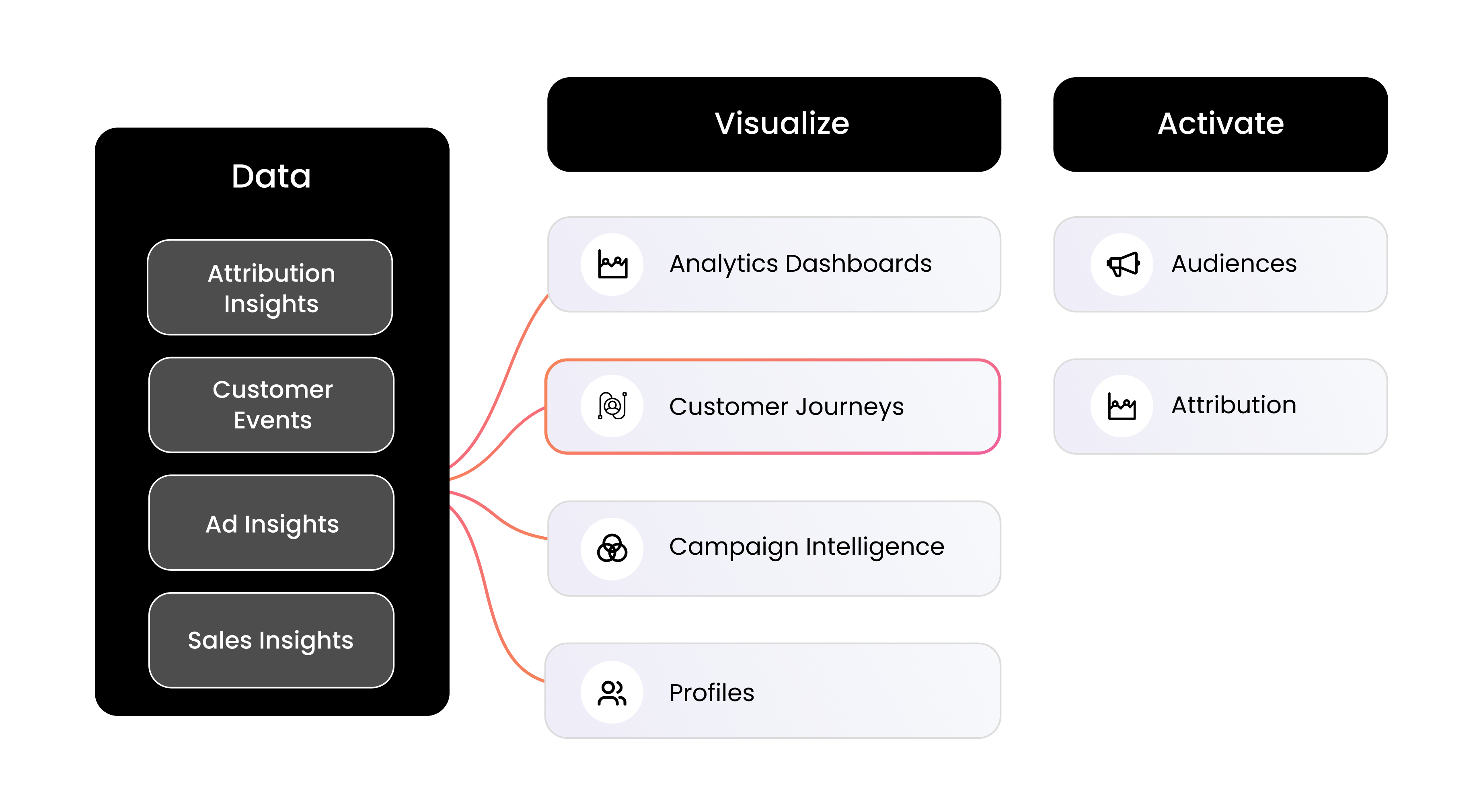
1. Customer Profiling, Identity Resolution, and Live Event Streaming
By combining fingerprinting with first-party data, IRIS builds rich customer profiles over time. Anonymous visitors become identified leads, and multiple sessions are unified under a single identity. For B2B, Stiddle also creates oppurtunity and company profiles synced from your CRM.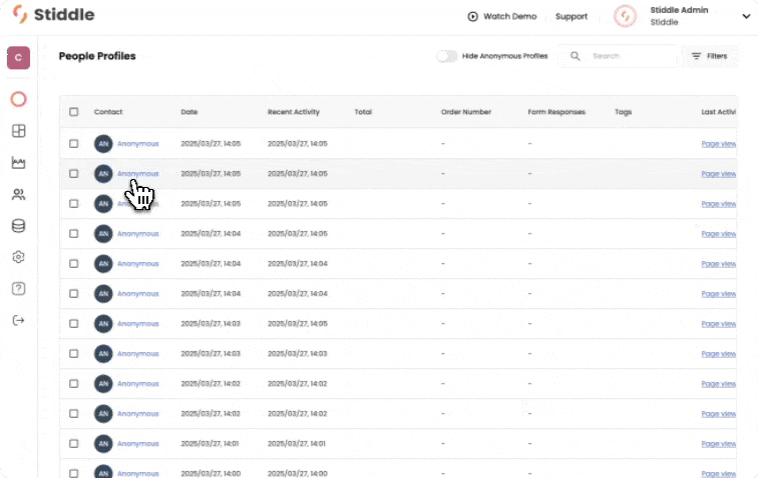
2. Revenue Attribution For Every Channel, Order, Lead, Company, and Oppurtunity
IRIS connects the dots across multiple visits, touchpoints, and devices to provide accurate, long-term attribution. Even when users switch devices or use private browsing, IRIS ensures that conversions are tied to the right campaign, channel, and sales team. Stiddle’s attribution is very flexible and easily works with ecommerce, D2C, lead generation, B2B, and apps.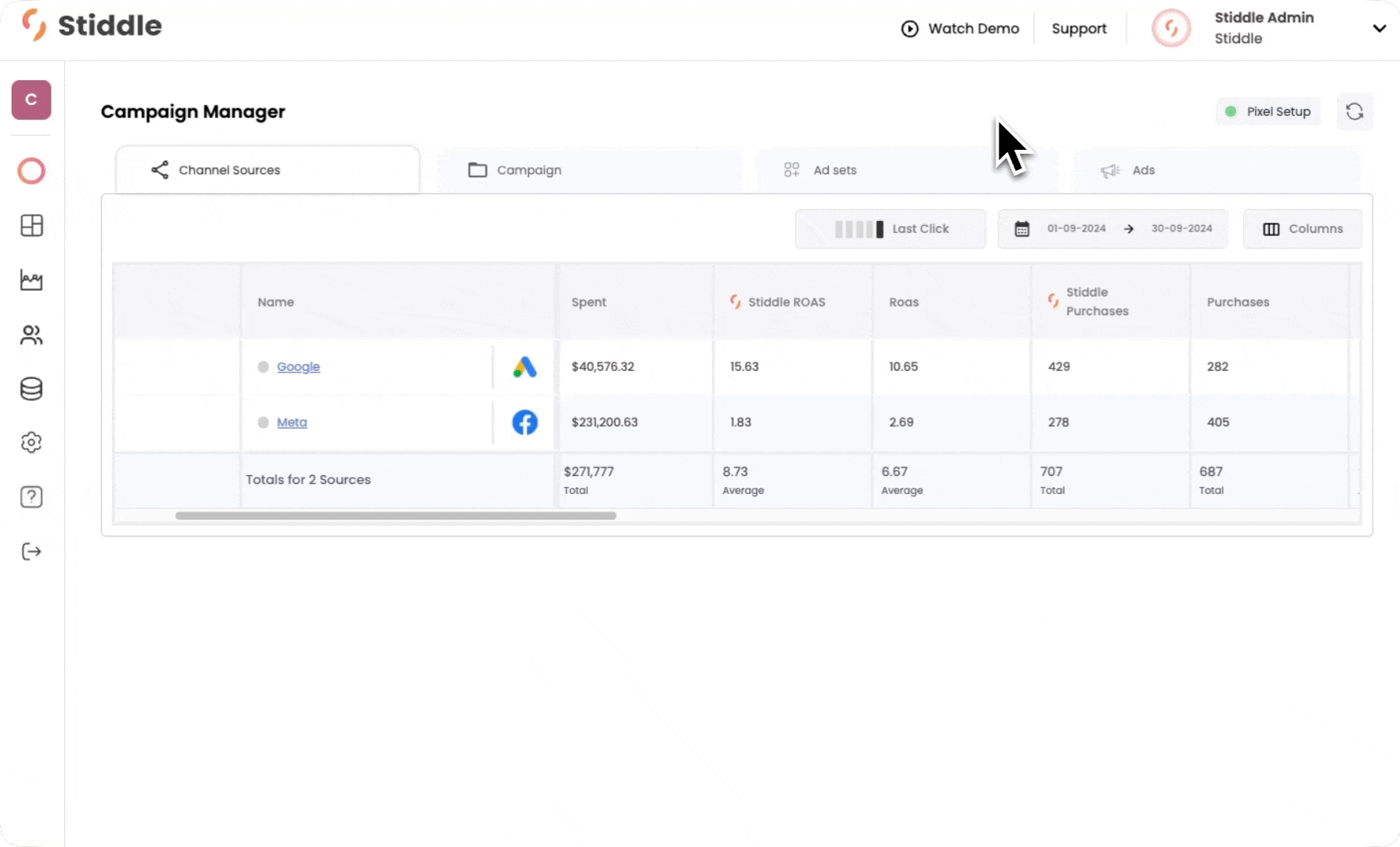
3. Flexible Funnels, Reports, and Customer Analytics
Track the full customer journey from first touch to conversion, across platforms and devices. IRIS enables multi-step path analysis that doesn’t break when cookies expire.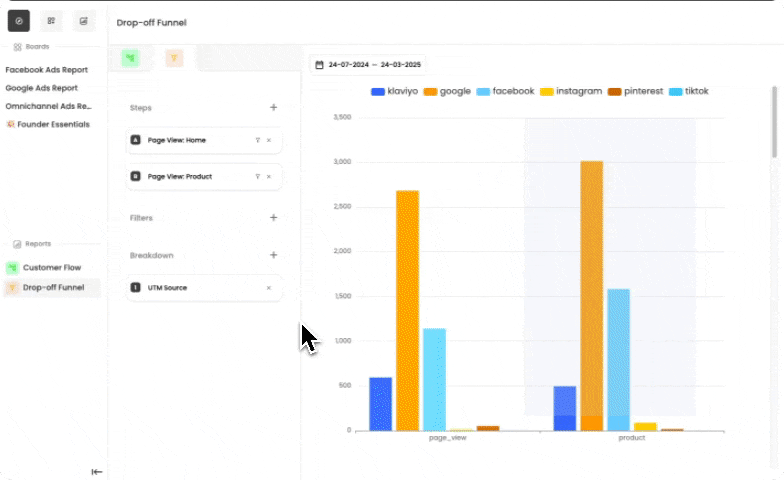
4. Customer Flows With Extended Visibility
Visualize how users move through your site or funnel. IRIS adds continuity to flow analysis by connecting otherwise fragmented sessions.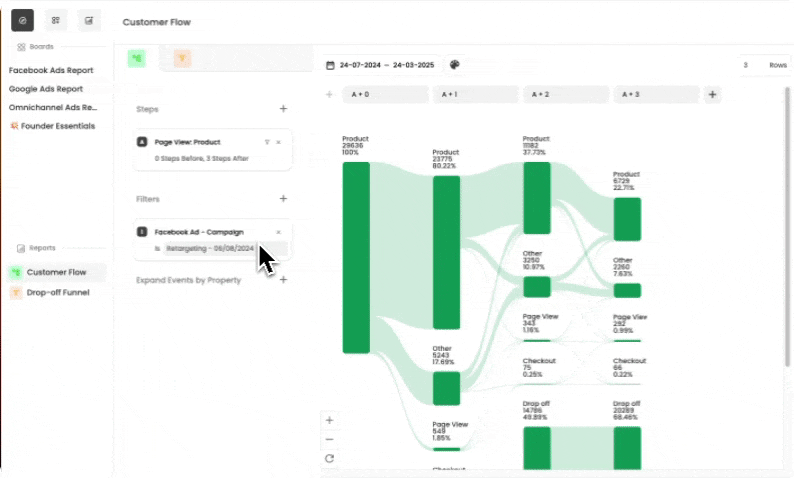
5. Smart Audiences That Know Your Customers
Build high-precision audiences based on persistent behaviors and traits. With fingerprinting at the core, Stiddle’s audience engine is more accurate and provides up to 50% additional profile attributes to segment with. Every audience includes KPIs caluclated in realtime.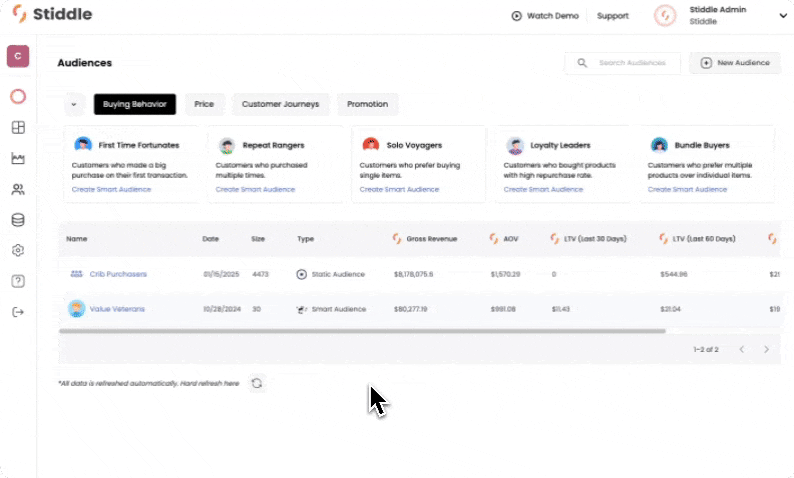
6. Dashboarding That’s Flexible, Sharable, and Accurate
Traditional analytics tools lose visibility when users delete cookies or change browsers. IRIS ensures data continuity and accuracy, providing more reliable metrics for decision-making.7. Bot and Crawler Detection
By analyzing behavior patterns and device inconsistencies, IRIS identifies and filters out non-human traffic. This improves data quality and protects GTM budgets.How Stiddle Identity Resolution Works
Stiddle IRIS continuously builds and maintains persistent identities by recognizing returning devices. When users visit across multiple devices (e.g., phone, laptop, tablet), IRIS collects fingerprints for each. However, Stiddle does not automatically merge these devices into a single profile without verified, privacy-safe identity signals.
Why We Don’t Merge on IP Address Alone
While IP addresses are often shared between devices, they are not reliable identity indicators. For example:- In apartment complexes or office buildings, multiple unrelated users may share the same public IP address.
- Mobile devices may switch IPs frequently between cellular and WiFi networks.
How Device Merging Works
Stiddle waits for a confirmed match on personally identifiable information (PII)—such as:- Email address
- Phone number
- Name or address
- Form fills
- Checkouts or purchases
- Account logins or sign-ups
View-Through Attribution and Awareness Impact
In addition to tracking direct click-through conversions, Stiddle also accounts for view-through activity—when a user sees an ad but doesn’t click, and later returns via another channel to convert. Stiddle pulls view-through confidence signals from integrated ad platforms (like Meta and Google), allowing advertisers to measure the influence of top-of-funnel (TOF) impressions on bottom-of-funnel (BOF) conversions.
Why This Matters
Consider this common scenario:- A user views a Facebook ad but doesn’t click.
- Days later, they search the brand organically or click a retargeting ad from another platform.
- They convert through a separate BOF campaign.
How Stiddle Solves This
Stiddle IRIS tracks the original device fingerprint and links impression data from ad platforms with the eventual conversion across sessions and channels. This gives advertisers:- A clearer view of TOF campaign impact
- Better-informed budget allocation
- Confidence in creative effectiveness, even when clicks aren’t immediate
How Stiddle Makes Data Better
Stiddle goes beyond identity resolution and attribution to improve the quality and clarity of your data with advanced enrichment and cleanup features. This ensures brands aren’t just tracking conversions—but doing so with precision and context.Bot and Crawler Detection
Stiddle IRIS uses behavioral patterns, signal anomalies, and machine learning to detect and filter out non-human traffic. This eliminates skewed performance metrics caused by bots or automated crawlers, ensuring your data reflects true human engagement.Real-Time Currency Conversion
For global brands selling in multiple regions, Stiddle automatically applies real-time currency conversion at the moment a transaction occurs. By pulling the live exchange rate, Stiddle translates international sales into your base reporting currency instantly. This enables:- Accurate revenue comparisons across countries
- Clean, unified reporting for international teams
- More precise ROAS and CPA calculations
Refund Tracking and Attribution Impact
Many brands—especially those in eCommerce—offer refunds. But few analytics tools reflect how those refunds affect performance. Stiddle closes this gap by integrating refund data directly into the attribution stream. This allows:- Subtraction of refunded orders from attributed revenue
- Visibility into refund-adjusted ROAS and LTV
- Granular insights into which ads, campaigns, keywords, and assets lead to higher-than-average refund rates
Stiddle IRIS vs Traditional Customer Identification Methods
Cookies (First-Party vs Third-Party)
- First-party cookies are set by the website a user is visiting and store a unique token in the local storage folder of the browser. They are often used for session tracking, login state, or analytics.
- Third-party cookies are set by domains other than the one the user is visiting and store a unique token (or cookie) in the browser’s cookie storage. These are used for tracking users across different websites, primarily for advertising purposes.
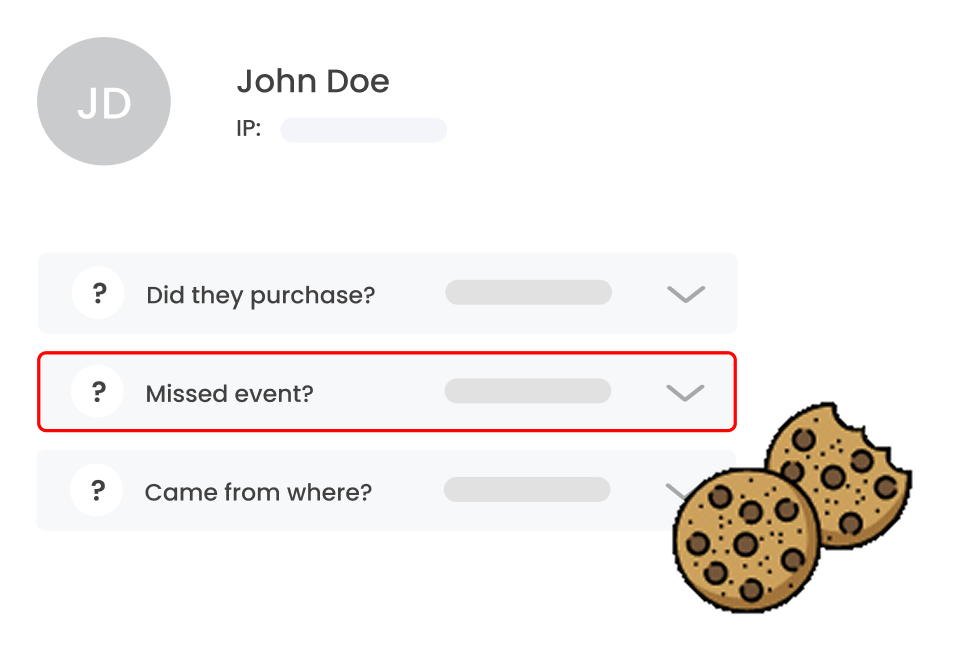
Stiddle IRIS Advantages Over Cookies
| Feature | First-Party Cookies | Third-Party Cookies | Stiddle IRIS |
|---|---|---|---|
| Persistence Duration | Short (session) | Medium (days/weeks) | Long (up to 3 years) |
| Cross-Device Tracking | No | Limited | Yes |
| Resilience to Deletion | Easily deleted | Frequently blocked | Resistant |
| Compliance Risk | Low | High | Low |
| Modern Browser Support | Yes | No | Yes |
| Real-Time Identity Resolution | No | No | Yes |
The Stiddle Quad Tracking Process
At the core of Stiddle’s data architecture is the Quad Tracking Process, which unifies data across the marketing stack to provide end-to-end visibility:- Sales Channel Integrations
- E-commerce platforms: Shopify, Magento, BigCommerce, & others
- B2B/Lead Gen: Salesforce, Hubspot, Pipedrive, & others
- Browser Tracking with Stiddle IRIS
- Persistent device and user identity resolution across sessions, devices, and incognito browsers.
- GTM Platform Integrations
- Ad channels: Facebook, Google Ads, LinkedIn, TikTok, & more
- Email and CRM: Klaviyo, Mailchimp, ActiveCampaign, & more
- UTM Collection
- Covers obscure or non-integrated platforms like programmatic DSPs, email campaigns, influencer links, and organic channels using UTM parameters.
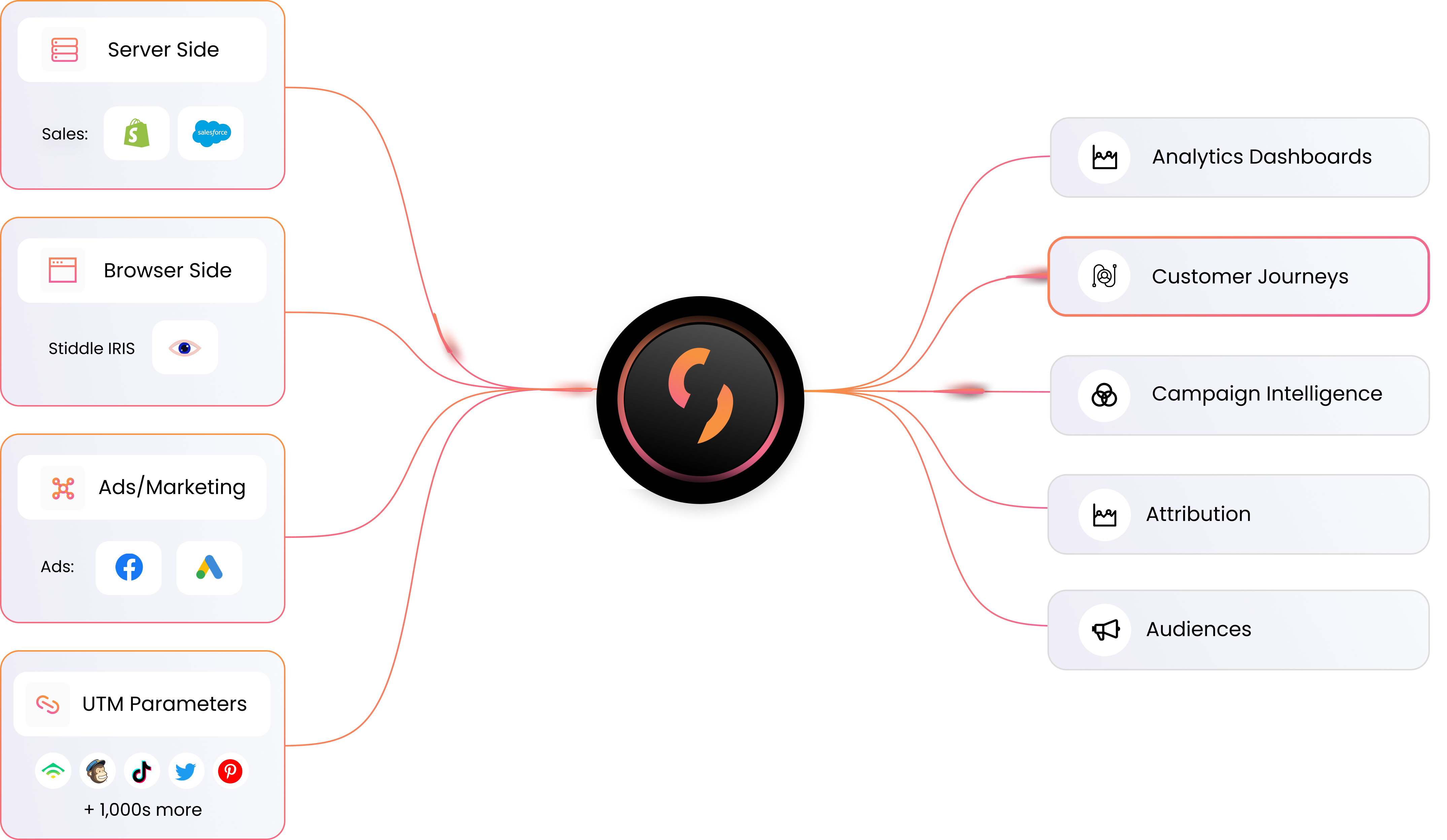
How IRIS Powers Stiddle AI Attribution Models
Stiddle’s AI attribution models rely on unified data from the Quad Tracking Process. Stiddle IRIS provides the persistent identity resolution that ensures this data can be trusted across touchpoints, even when traditional identifiers fail.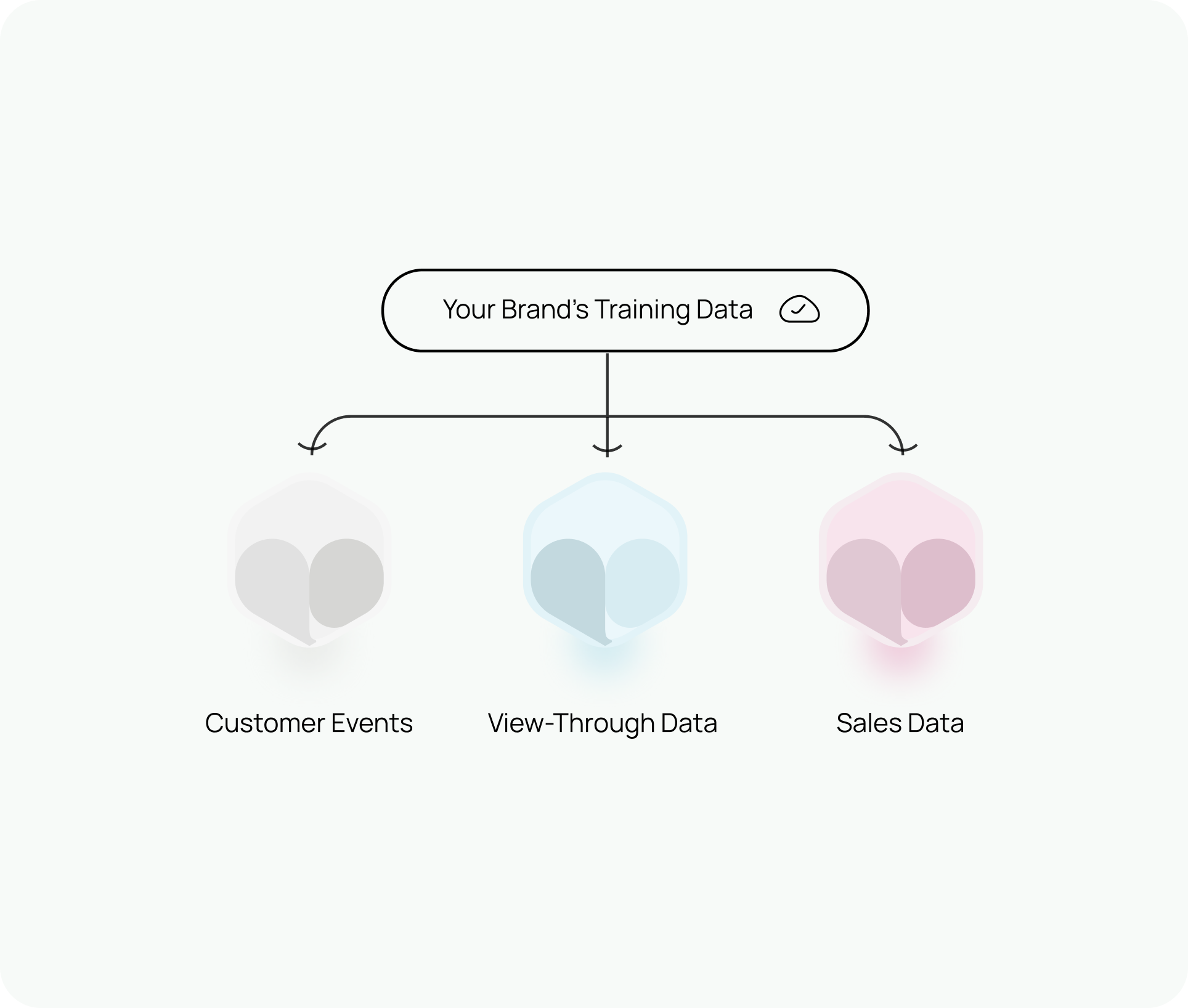
- Fingerprints from IRIS for durable tracking
- First-party CRM data from sales platforms
- Ad and email interaction data from GTM integrations
- Traffic source metadata from UTM tracking
- Accurately assign revenue credit to top-of-funnel channels
- Predict customer lifetime value (CLV) based on early engagement signals
- Optimize budget allocation across platforms using real, verified behavioral trends